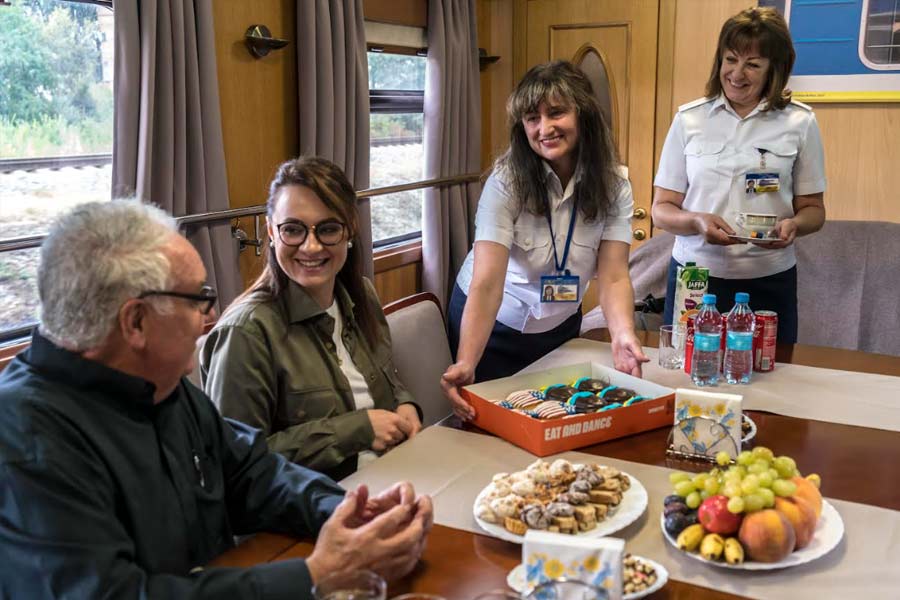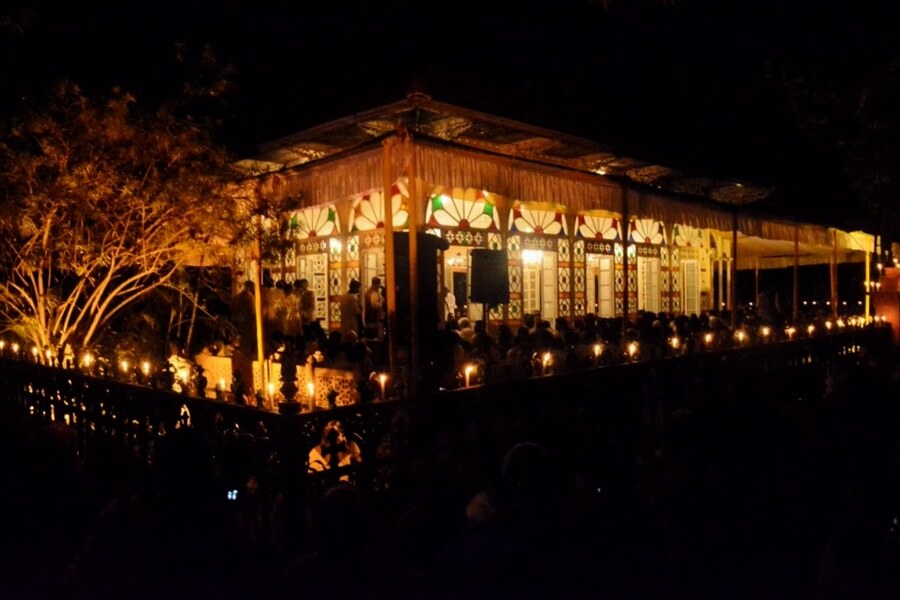 Friday, 27 December 2024
Friday, 27 December 2024
 Friday, 27 December 2024
Friday, 27 December 2024
In the nearly three years since Russia invaded Ukraine, Ursula von der Leyen, the European Union’s top official, has grown accustomed to the 10-hour overnight train ride to Kyiv. She passes the time preparing for meetings and reading books about Ukraine, when she is not trying to catch some sleep.
Von der Leyen has visited Ukraine eight times since early 2022. So when she sees images of other foreign leaders in Kyiv, such as Secretary of State Antony Blinken, she can understand their exhaustion all too well.
“When I see the tired eyes, I know he had a bad night of sleep with the tuk-a-tuk-a-tuk-a-tuk on the tracks,” von der Leyen said of Blinken during a trip to Kyiv in September.
With civilian flights to Ukraine suspended for security reasons, trains have become the primary mode of travel in the war-torn nation. Over the past 2-1/2 years, millions of Ukrainians have relied on the country’s vast rail network to get in and out, often enduring long journeys in sleeper cabins.
World leaders visiting Ukraine have had a similar experience — albeit with added comfort. Since the early months of the war, Ukrzaliznytsia, the Ukrainian national railway, has deployed VIP cars to shuttle dignitaries in and out of the country. They are equipped with private sleeping quarters, a conference room and a kitchen where attendants prepare meals.
These special trains have become an enduring feature of the war, a unifying experience for the dozens of leaders who have been to Ukraine, including President Joe Biden, Chancellor Olaf Scholz of Germany and Prime Minister Narendra Modi of India. All have taken the train at night, window curtains drawn to minimize detection by Russian drones. All have slept in the same cabins, lulled by the rumble of the tracks.
Oleksandr Shevchenko, the deputy head of passenger services at Ukrzaliznytsia, lauded his railway’s ability to transport so many world leaders on long overnight trips and cater as best as it can to their needs. “We have become pioneers in that,” he said.
But these trips have been more than just a logistical feat. Seeing an opportunity in the long hours foreign officials spend aboard the train — often more than their time on the ground — Ukrainian authorities have turned the trip into a tool to win their favor.
On the train, officials are offered traditional Ukrainian dishes and books about Ukraine’s history and wartime struggle in an effort to deepen their understanding of the country. After key agreements are reached in Kyiv, Ukrainian authorities leave thank-you notes in the cars.
Sometimes, the gestures are more pointed. Early last year, as Ukraine lobbied its Western allies, including Finland, to supply Leopard tanks, train crew members wore leopard-print scarves during a visit by the Finnish president.
“Whenever Ukraine needs something from a foreign leader, we, in collaboration with the foreign affairs ministry, try to come up with certain hints,” Shevchenko said with a smile.
With peace talks looking more likely as the war drags on, many more diplomats are expected aboard the VIP trains, which have been used more than 1,000 times since the war began.
“The train is much more than a transportation system — it has also become a bridge for diplomacy,” said Annalena Baerbock, the German foreign minister, who has visited wartime Ukraine eight times.
The special train project, called “Iron Diplomacy” by Ukraine, began with a late-night call to Shevchenko on March 14, 2022. Russia’s full-scale invasion was in its third week and the prime ministers of Poland, the Czech Republic and Slovenia wanted to visit Kyiv to show their support.
Tasked with organizing the trip, Shevchenko rushed to Lviv, a city near the Polish border, where he and his team assembled a small train of four cars and a locomotive. They then set off to meet the prime ministers across the border in Poland, the train’s point of departure.

The first trip was “a bit chaotic,” Shevchenko said in an interview at Kyiv’s main train station, a grand baroque-style building with a large hallway with columns and chandeliers. Security teams scrambled on board to plan for their arrival in Kyiv, which was still partially surrounded by Russian forces, including where to position snipers at the train station.
Over time, Ukrzaliznytsia perfected the details, he said. Two alternate routes are always prepared in case of Russian attacks. When Biden visited Kyiv last year, two identical trains ran simultaneously on different routes “so that no one would know which was the ghost train and which was the real one,” he said.
The train carrying Biden was dubbed “Rail Force One” by Ukrainian authorities.
To transport foreign officials, Ukraine has repurposed luxury railroad cars originally designed for wealthy passengers who rented them for trips across the country before the war. Standard sleeper cars are attached to the VIP cars to transport the rest of the delegation.
During a visit to Kyiv in October, Defense Secretary Lloyd Austin traveled in a wood-paneled car with a conference room equipped with a polished wooden table and Victorian-style chairs. Green and gold carpets covered the floor. At the end of the car was a private bedroom, with an en-suite blue-tiled bathroom.
“We want our guests to be as comfortable as possible,” said Zoya Bohach, the train attendant on that trip. On a recent afternoon, she was preparing the same car before a visit of Howard G. Buffett, a philanthropist who runs a multibillion-dollar foundation, setting the conference room table with six sets of scalloped white plates.
On a side table, books seemingly chosen to evoke empathy for Ukraine’s plight awaited Buffett: a compilation of President Volodymyr Zelenskyy’s wartime speeches and an account of children’s experiences during the war.
The trains’ decorations can be lavish, with the suite adorned in gold detailing throughout, from the walls to the lighting fixtures. During a June 2022 joint trip to Ukraine, the leaders of Germany and Italy teased President Emmanuel Macron of France about his seemingly superior compartment. “Mine is much less luxurious,” Mario Draghi, Italy’s prime minister at the time, quipped to a smiling Macron.
Not all politicians ride the souped-up trains, because there are only a handful of them. Gabrielius Landsbergis, Lithuania’s foreign minister, who has made 11 trips to Ukraine during the war, travels in a standard sleeping car reserved for his delegation.
Landsbergis uses the long train rides to prepare for his meetings the next day, holding briefings with aides in tiny cabins.
“A few of my best sleeps that I have had are on the train,” Landsbergis said. “Maybe it’s the rocking.”
Magdalena Andersson, the former prime minister of Sweden, said that during the long trip to Kyiv in the summer of 2022, she became aware of the stress that Ukrainians had experienced, knowing that an attack could come at any moment.
“Traveling through a country that is in war, of course, gives you quite a lot to reflect about when you have so many hours without interconnectivity,” she said.
She said it was critical for her to see for herself a mass grave in Bucha, near Kyiv, and evidence of other horrors committed by Russian forces. “Coming home, I could talk about it with the citizens of Sweden in a way that I wouldn’t have been able to do otherwise.”
The New York Times News Service







